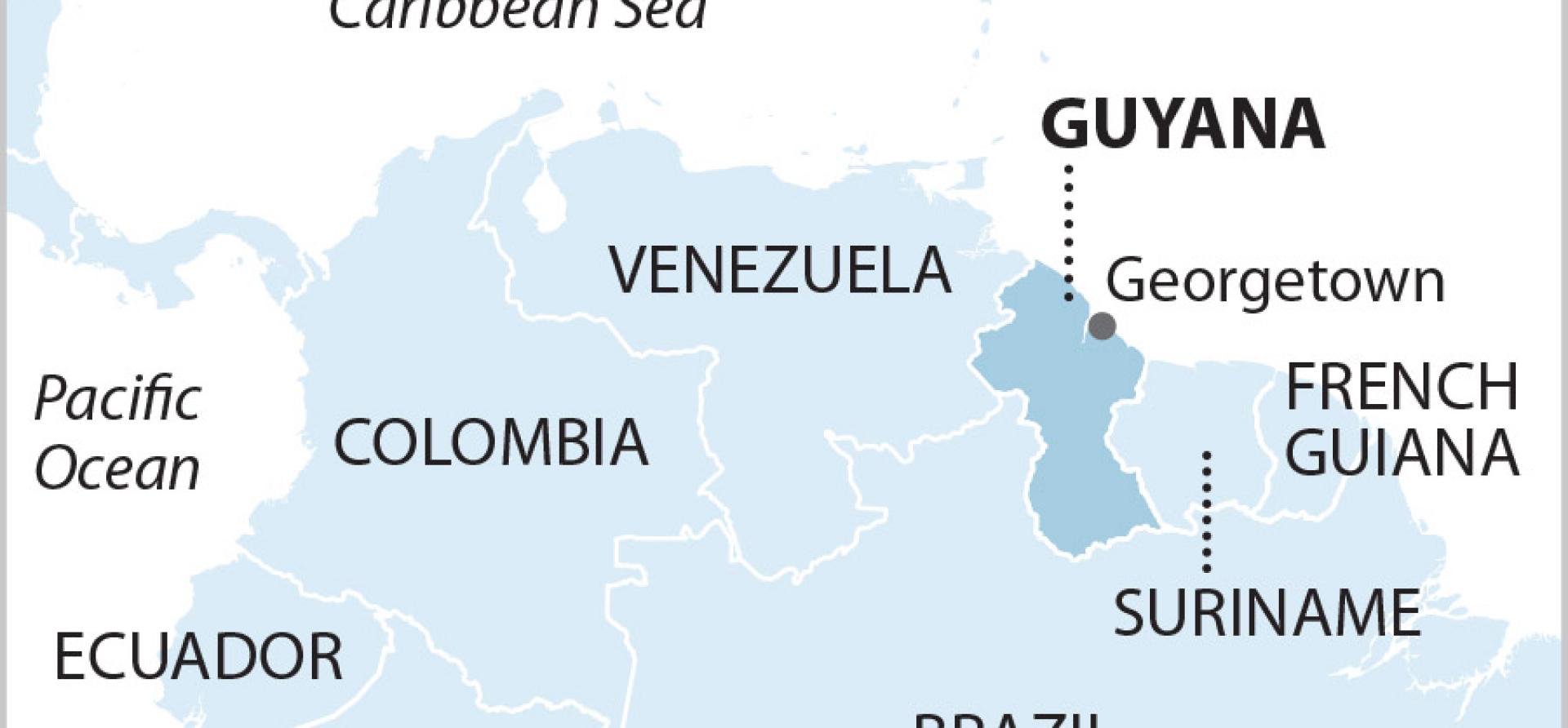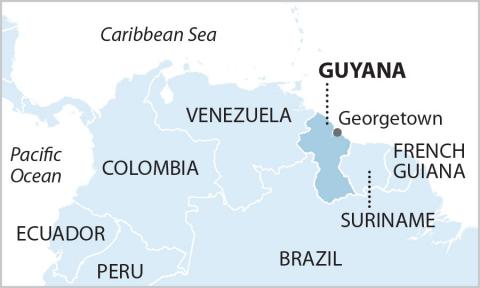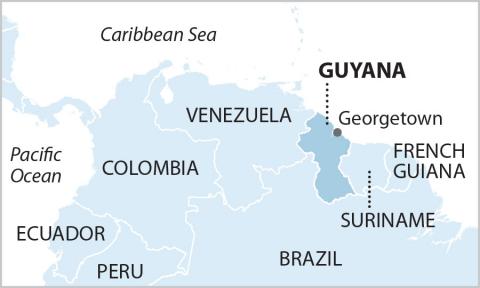Recent decision leaves ExxonMobil responsible for only part of Guyana oil spill costs, leaving Guyanese people on the hook for the rest

Key Findings
In a recent interim decision in a case regarding the coverage of oil spill cleanup costs in Guyana, regulators decided that they could cut corners with regard to ExxonMobil’s liability in the event of an oil spill.
A lower court ruled that the Guyanese government had the right to demand insurance coverage providing a full guarantee of all costs in the event of a spill, but it did not enforce that right.
On appeal, the court has ordered ExxonMobil to put up $2 billion for Guyana oil spill costs, leaving Guyana on the hook for the rest.
This decision shifts uncapped liability from ExxonMobil and commercial operators to the Guyanese people.
The entire case is pending a full airing.
Among the several controversies involving ExxonMobil, the oil spill cleanup from Hess and China National Offshore Oil Corporation’s (CNOOC) offshore oil drilling project in Guyana has taken center stage.
A lower court ruling excoriated ExxonMobil and the Guyana Environmental Protection Agency (EPA) for its lax enforcement of permit provisions that protected Guyana in the event of an oil spill, making it clear that the company would be responsible for the costs of a cleanup. An appeals court, however, ordered ExxonMobil to post a $2 billion bond and shifted the rest of the liability for any potential oil spill back onto the people of Guyana.
ExxonMobil and the EPA, which is technically independent of the government, decided they could cut corners in setting ExxonMobil’s liability in the event of an oil spill.
The oil giant’s environmental permit issued by Guyana required two forms of financial assurance—industry standard environmental liability insurance for a stated amount, and a separate parent company guarantee/indemnity from ExxonMobil to cover everything not paid by its local affiliate and to indemnify the government of Guyana and the regulator for all costs in the event of a spill.
Although the government had the right under the permit to demand insurance coverage and a full guarantee of all costs in the event of a spill, it did not enforce those rights. As a result, a lower court judge found Guyana’s residents were left financially exposed to the costs of such an oil spill cleanup and to potential costs in neighboring countries.
The lower court ruling insisted that the law be applied and that ExxonMobil as the parent company provide the insurance and full guarantee/indemnity or the permit would be suspended. Suspension would mean a halt to ExxonMobil’s operations, pending compliance with the court order.
ExxonMobil and the EPA appealed the lower court ruling. Pending a decision on the merits of the appeal, according to published reports, the judge issued a stay of the lower court’s decision, allowing the drilling to continue, on the condition that ExxonMobil put up $2 billion in affiliate guarantees.
The appeal of the lower court decision will go before the full court of appeals for review. The attorney for EPA, in an unusual step by an environmental regulator, hailed the fact that the government had successfully compromised the unlimited guarantee. The attorney general has also applied to the court to represent the interests of the Guyanese government. This intervention in defense of the ExxonMobil consortium appears to underscore the point that the revenue Guyana expects from oil production takes priority over the nation’s environmental law. Arguing for the erosion of contractual rights in court and failing to enforce existing ones are extraordinary actions being taken by public agencies charged with protecting the public interest.
The newspapers and lawyers described the interim decision as a loss for the plaintiffs. It allows drilling to continue, and it raises the concern that the people of Guyana would bear any cleanup costs that exceed $2 billion.
There is no publicly stated rationale for the $2 billion. The 2010 Deepwater Horizon spill in the Gulf of Mexico cost BP and its insurers $70 billion. IEEFA reviewed the value of the economies of several neighboring islands and coastal countries identified in the environmental impact assessment in the path of a plume and found more than $140 billion in economic activity at risk.
Despite this limitation, the appeals court has affirmed that the coverage for Guyana prior to the litigation was inadequate. The details of the $2 billion have not been made clear yet. For example, it is unclear if the money is anticipated to cover only the consortium’s Liza One offshore permit. It is also unclear whether the $2 billion outlay is unanticipated and whether it impairs the return calculations that Exxon, Hess and CNOOC have provided to their investors concerning Liza One.
Neither the EPA (and now the government of Guyana) nor ExxonMobil has formally disclosed the actual terms and scope of existing coverage or the upper limits of liability coverage. The lack of transparency was an issue raised in the plaintiffs’ original complaint, a centerpiece of the lower court ruling.
Having been privy to negotiations with ExxonMobil on oil spills in my professional career, I know they are hard-fought. The company aggressively pursues its interests in places where oil spills have occurred, like New York Harbor. Each spill tends to raise significant issues related to the local habitat and economy. Even small spills require complex damage assessments, liability determinations and consent decrees.
This year, shareholders filed 10 shareholder resolutions concerning ExxonMobil and the financial risks posed to the company from climate change. The lower court’s original decision came down just before the company’s annual meeting at the end of May, raising extraordinary shareholder appeals concerning the risks. Two resolutions on litigation risk and oil spill reporting underscore the liability issues in this case. The two resolutions, as first-year filings, were unsuccessful but appear to have received sufficient vote levels to allow them to be filed again for consideration next year.
Covering Guyana’s current litigation and ExxonMobil’s shareholder events, Financial Crimes Digest noted that the vice president said last year that he might file a defamation case to defend against charges of impropriety, but no reported case filings have resulted and the Guyana Integrity Commission has announced no follow-up activity. Other reports at the time, however, claimed that a suit had been filed.
Guyana’s agreements with ExxonMobil are contracts.
And, as many have pointed out, the profit-sharing agreement gave away many rights to ExxonMobil.
A key element of the contract is to clearly define what happens in the event of an oil spill, but the government of Guyana has apparently chosen to ignore this responsibility. The industry, and ExxonMobil in particular, has addressed the issue of liability in other settings many times in the past. The lawsuit and appeal demonstrate that the terms of the contract related to oil spill cleanup of Guyana and its neighbors is shrouded in in secrecy and confusion.

















